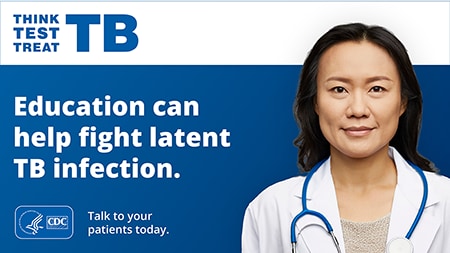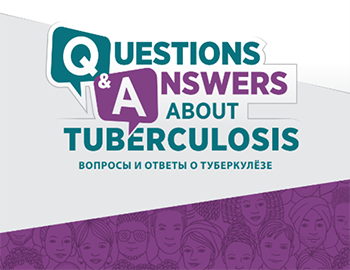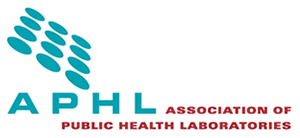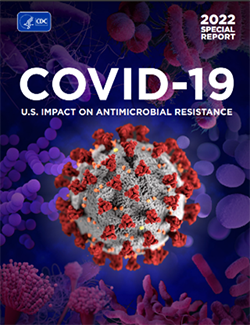TB NOTES

TB Notes 3, 2022
Notes from the Director

Dear Colleagues,
It has been a busy summer for staff at the Division of Tuberculosis Elimination (DTBE). Many staff in TB programs are also engaged in the response to mpox, while carrying on the important work of TB prevention and control.
DTBE continues to work with federal, state, and local agencies as part of the Uniting for Ukraine program through information and resource sharing, as well as support to local and state health departments. TB programs can find information, helpful links, and patient education materials in Ukrainian and Russian on the Uniting for Ukraine: Information for TB Programs webpage.
I am pleased to present the 2022-2026 Strategic Plan for DTBE. Although the United States has reported record low TB cases, too many people still suffer from TB disease in this country. To achieve our vision of TB elimination in the United States, this plan builds on the division’s previous work and was updated to reflect our continued commitment to health equity. We view this plan as a living document that will help guide our work through 2026 and look forward to operationalizing the plan with our partners. Our work would not be possible without these important collaborations, and this plan underscores the critical role of partners and stakeholders in achieving our goals.
The American Medical Association (AMA), with support from CDC, announced a new initiative aimed at helping physicians and other health care professionals increase routine screenings for HIV, STIs, viral hepatitis and latent TB infection. As part of this effort, the AMA worked to understand key barriers and drivers for implementing routine screening and developed a toolkit to provide best practices and strategies to enhance screening programs. The AMA is collaborating with six community health centers that will test quality improvement strategies outlined in the toolkit.
The importance of strong partnerships was also highlighted in a recent publication in The Lancet Infectious Diseases. CDC, with the assistance of state and local health departments, healthcare facilities, the U.S. Food and Drug Administration (FDA), and the U.S. Department of Agriculture, recently published “Nationwide tuberculosis outbreak in the USA linked to a bone graft product: an outbreak report.” The report describes an outbreak of donor-derived TB disease among people who had undergone surgery with a bone allograft product. Rapid, collaborative action by CDC, FDA, state and local health departments, and healthcare facilities prevented further harm and potentially saved lives. Based on this investigation, the American Association of Tissue Banks issued new recommendations for preventing tissue-derived TB transmission.
These are just a few highlights from our work over the past quarter. I invite you to read further for additional news, resources, and success stories from across DTBE.
Thank you for your continued efforts towards our goal of TB elimination.
Philip LoBue, MD, FACP, FCCP
Director
Division of Tuberculosis Elimination
National Center for HIV/AIDS, Viral Hepatitis, STD, and TB Prevention

DTBE Efforts for Promoting and Advancing Health Equity
In the United States, most TB cases occur among racial and ethnic minority groups. Barriers to accessing health care might also contribute to TB disease. Language barriers, immigration status, and cultural customs might also contribute to difficulties in accessing care, as well as decisions to access care.
To reduce disparities among populations most affected by TB, DTBE is committed to promoting and advancing health equity in both organizational and program-level TB control and prevention efforts. These efforts require establishing institutional commitments for identifying key actions that support DTBE’s mission and strategic priorities to reduce disparities.
To advance this work, DTBE formed the Health Equity Workgroup (HEW), which includes two members from each of its six branches and a member from the DTBE Office of the Director. The mission of HEW is to:
- educate CDC staff and the public about populations who experience TB health disparities and inequities,
- improve health equity by eliminating TB health disparities and inequities,
- plan, coordinate, and implement equity activities in alignment with the goals and objectives of the NCHHSTP Equity Initiative; and
- inform and shape DTBE’s agenda for programs, surveillance, research, communications, education, and policies aimed at preventing, reducing, or eliminating TB.
DTBE developed three goals in response to CDC’s CORE Health Equity Science and Intervention Strategy, which aims to integrate health equity into the agency’s public health work and reduce disparities in health outcomes.
- Goal 1: By December 2025, decrease TB incidence among non-U.S.–born Asian American persons from 26.2 per 100,000 (2019) to 20.8 per 100,000.
- Goal 2: By December 2025, decrease TB incidence among non-U.S.–born Hispanic/Latino persons from 10.2 per 100,000 (2019) to 8.2 per 100,000.
- Goal 3: By December 2025, decrease TB incidence among U.S.-born non-Hispanic Black or African American persons from 2.6 per 100,000 (2019) to 2.0 per 100,000.
We invite you to send inquiries about DTBE health equity activities and Health Equity Workgroup to dtbeheworkgroup@cdc.gov.
Submitted by Awal Khan

Save the Date: TBTC Meeting
The next Tuberculosis Trial Consortium (TBTC) meeting will be held virtually December 1-2, 2022. We look forward to engaging with TBTC partners later this year.
Submitted by Carla Jeffries, JD, MPH
Medscape Publishes “5 Things to Know About the 4-month TB Treatment Regimen

Medscape recently published an article titled “5 Things to Know About the New 4-Month TB Treatment Regimen.” The article gives healthcare providers information on CDC’s interim guidance on a 4-month treatment regimen for U.S. patients with drug-susceptible pulmonary TB disease.
Submitted by Wendy Carr, PhD and Bria Marlowe, MPH
Think. Test. Treat TB Campaign

The Think. Test. Treat TB campaign continues to raise awareness about latent TB infection, risk, and the link between latent TB infection and TB disease among Asian Americans and their healthcare providers. The campaign website has over 55,000 total page views and over 2,000 resource downloads. The three most downloaded resources include the Campaign Resource Overview, Learn the Facts fact sheet, and the Inactive Tuberculosis Testing & Treatment poster. The Think. Test. Treat TB patient and provider education materials are available in Chinese, English, Ilocano, Marshallese, Spanish, Tagalog, and Vietnamese. Print materials are available to order for free through CDC INFO on Demand.
Starting this fall, campaign activities will be transitioning to a new phase focusing on healthcare providers who serve patients at risk of TB. This phase of the campaign aims to continue and expand the reach of Think. Test. Treat TB to raise awareness of screening recommendations and encourage healthcare providers to test and treat latent TB infection. Activities will include national and targeted outreach through a variety of communication channels, engagement with professional organizations, and collaboration with public health departments, TB clinics, the TB Centers of Excellence, and other partners.
Submitted by John Parmer, PhD

Russian-language TB Resources Available
“Questions and Answers about Tuberculosis” and “TB: General Information fact sheet” are now available in Russian. These materials, along with other patient and general public materials are available in multiple languages on the CDC website, including Ukrainian, Dari, Pashto, Spanish, Tagalog, Vietnamese, and more. Materials can be ordered for free through CDC-INFO on Demand.
Submitted by Peri Hopkins, MPH
National Center for Health Statistics Research Data Center Pilot Project
The National Tuberculosis Surveillance System (NTSS) collects information on each newly reported case of TB disease in the United States. To increase accessibility to NTSS data, DTBE is collaborating with the National Center for Health Statistics (NCHS) to make data available through Research Data Centers (RDCs). RDCs allow researchers to access restricted-use data while maintaining confidentiality and data security requirements.
To participate in this pilot project, researchers must submit a research proposal outlining the need for restricted-use data to the RDC by January 31, 2023. Researchers must access the data at a secure lab in the RDC Network, and researchers will have up to 3 years of access to RDC to complete their analyses. DTBE will review all output generated at RDCs before it is released to the researcher to ensure that it complies with Assurance of Confidentiality requirements.
Visit the Research Data Center TB webpage or more information and contact tbinfo@cdc.gov with any questions.
Submitted by Julie Self, PhD, MPH
Analysis reveals TB outbreaks are rare in most U.S. state prison systems

On July 13, 2022, the American Journal of Public Health released a publication titled, “Tuberculosis Outbreaks in State Prisons, United States, 2011–2019.”
The findings in this study affirm the effectiveness of TB prevention and control practices before the COVID-19 pandemic in most, but not all, state prison systems. These include establishing and disseminating infection prevention and control policies and plans, testing regularly for latent TB infection and TB disease, treating people with latent TB infection to prevent the development of TB disease and ongoing transmission, and collaborating with state and local TB control officials when TB cases occur. All these practices are necessary and effective to prevent a TB disease outbreak. State prison systems that experienced lapses in TB prevention and control measures during the COVID-19 pandemic should work to re-establish control measures and be vigilant for TB symptoms and any evidence of transmission within the prison system. CDC assistance is available through state and local health departments to help maintain and improve TB prevention and control practices in correctional settings.
CDC has a new quick reference document that provides summary recommendations and guidance for TB, HIV, viral hepatitis, and sexually transmitted infection prevention and control in correctional settings. We also encourage you to stay connected to news and updates about CDC’s correctional health work and other resources through the bimonthly Connections newsletter.
Submitted by Rebekah J. Stewart, MSN, MPH, APRN; LCDR, U.S. Public Health Service; Nurse Epidemiologist
A Public Health Advisor’s Perspective: Implementation of 4-month rifapentine-moxifloxacin regimen in New York City

Mari Galvis, CDC Public Health Advisor
Mari Galvis is a CDC Public Health Advisor (PHA) with the Bureau of Tuberculosis Control (BTBC) in New York City (NYC), serving as a Project Coordinator for the new 4-month rifapentine-moxifloxacin regimen. Field Staff PHAs are assigned to local health departments to provide technical assistance and to support the overall mission of preventing, controlling, and eliminating TB.
BTBC has a long history of programmatic research, including participating in the TB Trials Consortium (TBTC). Based on the recent CDC treatment guidance, BTBC started planning and implementing this new 4-month treatment regimen to treat drug-susceptible pulmonary TB disease in NYC TB clinics.
As the assigned Project Coordinator for this initiative, my main role consists of leading the planning meetings and directing workgroup members towards project goals and objectives. At the beginning of the planning phase, BTBC formed a workgroup consisting of key staff from both BTBC and the Bureau of Public Health Clinics (BPHC). The protocol and eligibility criteria were based on CDC recommendations published in Morbidity and Mortality Weekly Report (MMWR).
Once the guidelines were reviewed, the workgroup drafted the program protocol, and the established patient eligibility criteria for enrollment for the regimen. As there was a national rifapentine shortage, availability and procurement would be an ongoing issue. It was also determined that training for clinic staff would be needed.
Based on BTBC’s previous experience with implementing new drug regimens (i.e. 3HP for latent TB infection treatment), the workgroup developed a protocol, eligibility form, training materials, job aids and program evaluation objectives. Our Medical Director at BTBC, and I worked closely with the BTBC Director of Training and Education to review the job aids to ensure clarity. We also collaborated with the Lead Pharmacist from BPHC to communicate the availability of rifapentine at TB clinics.
On April 11, 2022, both Bureaus formally began encouraging the use of this new regimen in two clinics: Corona Chest Center located in Queens, NY, and Fort Greene Chest Center located in Brooklyn, NY. On May 9, Corona Chest Center started the first patient on the 4-month rifapentine-moxifloxacin regimen.
During the implementation phase, monitoring activities included:
- Conducting weekly appointment reviews to identify potential new patients,
- Encouraging providers to discuss the new regimen with their patients, and
- Sending daily e-mails to clinic staff of potential new patients with scheduled appointments for the day. The e-mails not only served as a reminder, but also encouraged physicians to consult with the Medical Director about the possibility of starting a new patient on the regimen.
Throughout the process of implementing this new regimen in TB clinics the Bureaus encountered several challenges. The program was confronted with rifapentine shortages, and consequently the implementation was limited to a few patients per clinic. With the collaboration of the BPHC pharmacist, we have been able to strategize rifapentine availability in our clinics.
“We also must be very selective with patients in terms of the protocol. This regimen must be patient-centered, and we cannot offer it to patients who had already been on treatment for more than 30 days. A number of patients offered this regimen did not want to take it because of the increased daily pill burden” said Dr. Felicia Dworkin, Director of TB Medical Services at BPHC.
Additionally, as is common in most initiatives, it has taken some time for clinical staff to get familiar with the new regimen and offer it to patients. To address this challenge, we used appointment reviews and daily emails to engage staff and ensured job aids were in each of the exam rooms at the clinic to remind physicians to discuss this new regimen with eligible patients at their initial clinic visit.


Titles of job aids developed by the NYC 4 HPMZ Workgroup and placed in each exam room
This new regimen has been shown to be just as effective as the current 6-month regimen for drug-susceptible TB disease and provides an opportunity for a shorter length of treatment for patients. This potentially reduces the burden of managing many patients with active TB disease in a large jurisdiction program setting. Implementing new treatment regimens at local health departments requires strategic planning to address challenges and to ensure the program is meeting the intended goals and objectives. On July 6, BTBC/BPHC expanded its use of this regimen to a third clinic: Morrisania Chest Center located in Bronx, NY.
As a Project Coordinator, I continue to review and pre-screen new patients scheduled to our clinics and educate our clinic staff on this new regimen. BTBC will continue to enroll patients as appropriate and will continue to collaborate with BPHC. As our Director of Medical Affairs, Dr. Diana Nilsen stated, “It has a been a team effort with various offices in both Bureaus.”
The implementation of the new regimen could be cost-effective and beneficial to local health departments, but a program evaluation and cost effectiveness analysis would need to be conducted to determine the impact of the new regimen in a large jurisdiction program like NYC.
Acknowledgements:
- NYC 4 HPMZ Workgroup
- Bureau of Tuberculosis: Maria Galvis, BA; Joseph Burzynski, MD; Diana Nilsen, MD; Michelle Macaraig, DPH; Marco Salerno, MPH; Grace Gao, MPH; Daphne Juste, LMHC; Christine Chuck, MPA
- Bureau of Public Health Clinics: Felicia Dworkin, MD; Marci Whitehead, BS; Claudia Buchanan, RN, MSN/MPH; Faina Iskhakova B.S, PharmD, Errol Robinson, MPA, BSEE
Submitted by Maria (Mari) Galvis, CDC PHA, assigned to the Bureau of Tuberculosis in New York City.
National Tuberculosis Laboratory Conference

In July, public health laboratorians attended the 12th National Conference on Laboratory Aspects of Tuberculosis (TB) in Atlanta, Georgia. Conference participants included both new and veteran TB public health laboratory staff who attended sessions on growth-based and molecular antimicrobial susceptibility testing, next generation including whole genome sequencing, COVID-19 and laboratory TB continuity of operations, TB outbreaks and national TB efforts, and new treatment regimens. The conference was interactive through panel discussions, a TB patient perspective, networking, and a “supporting your staff” session.
Several awards were presented to fellow TB laboratorians including:
- ‘On the Front Lines of Tuberculosis Testing Award’ to Yvette Vergnetti, Alaska State Public Health Laboratory
- ‘Ed Desmond Laboratorian Award’ to Tanya Halse, New York State Department of Health, Wadsworth Center [awarded by the National TB Controllers Association (NTCA)]
- ‘Tuberculosis Lifetime Achievement Award’ to Denise Dunbar, Texas Department of State Health Services
Submitted by Monica Youngblood, MPH, M(ASCP)
Continuity of Operations Toolkit and Public Health Nurses Module
Laboratory Branch is developing a “Tuberculosis Continuity of Operations Plan (COOP) Toolkit.” The toolkit will summarize knowledge gaps and lessons learned from CDC TB Elimination Cooperative Agreement public health laboratory awardees who experienced an interruption of service event within the past three years (e.g., natural disaster, facility issue, equipment failure or maintenance, pandemic, etc.). The toolkit will include job aids and a mycobacteriology-specific laboratory COOP template to assist TB laboratories in future interruption of service events and a sample referral to an alternate testing laboratory.
The branch is also developing a web-based educational module, “Understanding Tuberculosis Laboratory Testing for Public Health Nurses,” intended for public health nurses that will include a high-level overview of TB laboratory workflows, testing methods, and associated results. This information will help public health nurses effectively communicate with patients, clinicians, and testing laboratories about methods and results.
Submitted by Monica Youngblood, MPH, M(ASCP)
COVID-19: U.S. Impact on Antimicrobial Resistance, Special Report 2022

CDC released COVID-19: U.S. Impact on Antimicrobial Resistance, Special Report 2022. The report found that much of the progress made in the United States in previous years combating antimicrobial resistance was lost, in large part, due to the effects of the COVID-19 pandemic.
Progress toward TB elimination has slowed in recent years and the COVID-19 pandemic strained public health services, including TB services. As previously published in Reported Tuberculosis in the United States, 2020, drug-resistant TB cases in the United States declined 28% from 2019 to 2020, similar to an overall decline in TB cases of 19%. This is probably due to multiple factors related to the COVID-19 pandemic.
CDC and public health partners will continue to monitor drug-resistant TB cases to better understand data trends and identify the most effective TB control and prevention strategies.
Submitted by CDC Division of Healthcare Quality Promotion
Save the Date: Hepatitis B United/TB Elimination Alliance Virtual Summit
Save the Date to attend a virtual mini-summit co-hosted by Hep B United and TB Elimination Alliance (TEA) from October 25-27, 2022. Additional information will be posted on the TB Elimination Alliance website.

Holzman SB, Perry A, Keh C, Salcedo K, Narita M, Ahmed A, Katz D, Krueger A, Shah M. Reply to Gaskell, et al. Clin Infect Dis 2022. Epub ahead of print.
Raz KM, Talarico S, Althomsons SP, Kammerer JS, Cowan LS, Haddad MB, McDaniel CJ, Wortham JM, France AM, Powell KM, Posey JE, Silk BJ. Molecular surveillance for large outbreaks of tuberculosis in the United States, 2018–2018. Tuberculosis 2022;126:102232.
Schwartz NG, Hernandez-Romieu AC, Annambhotla P, Filardo TD, Althomsons SP, Free RJ, Li R, Wyatt Wilson W, Deutsch-Feldman M, Drees M, Hanlin E, White K, Lehman KA, Thacker TC, Brubaker SA, Clark B, Basavaraju SV, Benowitz I, Burton Glowicz J, Cowan LS, Starks AM, Bamrah Morris S, LoBue P, Stewart RJ, Wortham JM, Haddad MB; Bone Allograft Tuberculosis Investigators. Nationwide tuberculosis outbreak in the USA linked to a bone graft product: an outbreak report. Lancet Infect Dis 2022:S1473-3099(22)00425-X. Epub ahead of print.
Althomsons SP, Winglee K, Heilig CM, Talarico S, Silk B, Wortham J, Hill AN, Navin TR. Using machine learning techniques and national tuberculosis surveillance data to predict excess growth in genotyped tuberculosis clusters. Am J Epidemiol 2022. Epub ahead of print.
Deutsch-Feldman M, Springer YP, Felix D, Tsang CA, Brostrom R, Haddad M. Tuberculosis among Native Hawaiian and Other Pacific Islander Persons: United States and U.S.-affiliated Pacific Islands, 2010–2019. Health Equity 2022;6(1):476–84.
Stewart RJ, Raz KM, Burns SP, Kammerer JS, Haddad MB, Silk BJ, Wortham JM. Tuberculosis outbreaks in state prisons, United States, 2011–2019. Am J Public Health 2022;112(8):1170–9.
Choudhary R, Webber BJ, Womack LS, Dupont HK, Chiu SK, Wanga V, Gerdes ME, Hsu S, Shi DS, Dulski TM, Idubor OI, Wendel AM, Agathis NT, Anderson K, Boyles T, Click ES, Silva JD, Evans ME, Gold JAW, Haston JC, Logan P, Maloney SA, Martinez M, Natarajan P, Spicer KB, Swancutt M, Stevens VA, Rogers-Brown J, Chandra G, Light M, Barr FE, Snowden J, Kociolek LK, McHugh M, Wessel DL, Simpson JN, Gorman KC, Breslin KA, DeBiasi RL, Thompson A, Kline MW, Boom JA, Singh IR, Dowlin M, Wietecha M, Schweitzer B, Morris SB, Koumans EH, Ko JY, Siegel DA, Kimball AA. Factors associated with severe illness in patients aged <21 years hospitalized for COVID-19. Hosp Pediatr 2022:e2022006613. Epub ahead of print. (Also with DVH [Rogers-Brown]).
Gurbaxani BM, Hill AN, Paul P, Prasad PV, Slayton RB. Evaluation of different types of face masks to limit the spread of SARS-CoV-2: a modeling study. Sci Rep 2022;12(1):8630.
Sandhu P, Shah AB, Ahmad FB, Kerr J, Demeke HB, Graeden E, Marks S, Clark H, Bombard JM, Bolduc M, Hatfield-Timajchy K, Tindall E, Neri A, Smith K, Owens C, Martin T, Strona FV. Emergency department and intensive care unit overcrowding and ventilator shortages in US hospitals during the COVID-19 pandemic, 2020–2021. Public Health Rep 2022. Epub ahead of print.
Sapkota S, Caruso E, Kobau R, Radhakrishnan L, Jobst B, DeVies J, Tian N, Hogan RE, Zack MM, Pastula DM. Seizure- or epilepsy-related emergency department visits before and during the COVID-19 pandemic—United States, 2019–2021. MMWR Morb Mortal Wkly Rep 2022;71:703–8.
Chu VT, Schwartz NG, Donnelly MAP, Chuey MR, Soto R, Yousaf AR, Schmitt-Matzen EN, Sleweon S, Ruffin J, Thornburg N, Harcourt JL, Tamin A, Kim G, Folster JM, Hughes LJ, Tong S, Stringer G, Albanese BA, Totten SE, Hudziec MM, Matzinger SR, Dietrich EA, Sheldon SW, Stous S, McDonald EC, Austin B, Beatty ME, Staples JE, Killerby ME, Hsu CH, Tate JE, Kirking HL, Matanock A; COVID-19 Household Transmission Team. Comparison of home antigen testing with RT-PCR and viral culture during the course of SARS-CoV-2 infection. JAMA Intern Med 2022. Epub ahead of print.
Smith JP, Oeltmann JE, Hill AN, Tobias JL, Boyd R, Click ES, Finlay A, Mondongo C, Zetola NM, Moonan PK. Characterizing tuberculosis transmission dynamics in high-burden urban and rural settings. Sci Rep 2022;12(1):6780.
Waltenburg MA, Whaley MJ, Chancey RJ, Donnelly MAP, Chuey MR, Soto R, Schwartz NG, Chu VT, Sleweon S, McCormick DW, Uehara A, Retchless AC, Tong S, Folster JM, Petway M, Thornburg NJ, Drobeniuc J, Austin B, Hudziec MM, Stringer G, Albanese BA, Totten SE, Matzinger SR, Staples JE, Killerby ME, Hughes LJ, Matanock A, Beatty M, Tate JE, Kirking HL, Hsu CH; COVID-19 Laboratory & Testing Task Force. Household transmission and symptomology of SARS-CoV-2 Alpha variant among children—California and Colorado, 2021. J Pediatr 2022. Epub ahead of print.
To receive the TB Notes Newsletter, enter your email address at the bottom of the TB Notes webpage. If you would like to submit an article or update in TB Notes, please email Kevin Crooks at qyd7@cdc.gov.
You can follow us on Twitter @CDC_TB and Facebook @CDCTB and sign up for email updates through Adobe Campaign.